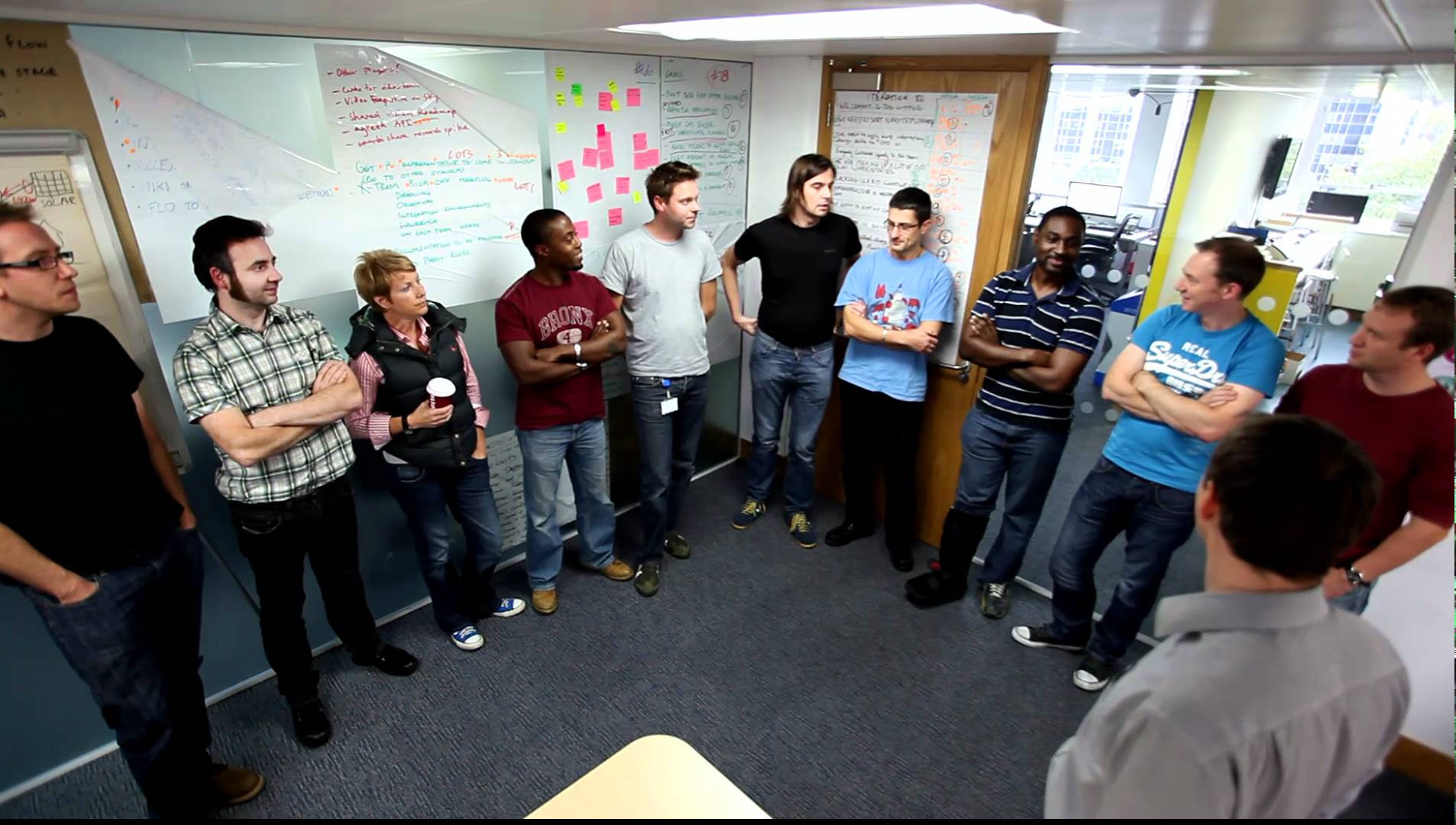Comments
- No comments found

The daily scrum is an event that is defined in the scrum guide and is a specific scrum practice.
A daily scrum is a meeting for the development team to create a plan for the day. It is not a status update for stakeholders.
Daily scrums improve communications, eliminate other meetings, identify impediments to development for removal, highlight and promote quick decision-making, and improve the development team's level of knowledge.
Rita is a developer I have known for long. She is the scrum master for a 7 member high performing scrum team. The team has been working together for almost 2 years. Their composition has generally been stable, with the last replacement to the team almost 6 months ago. Sipping her latte, she cribbed that their daily scrum is quite useless. There is nothing discussed there which team already does not know. The team does not feel any value add, though they still come since they are very much a disciplined team.
She then popped the question that got me thinking deeply. “Is Daily Scrum optional? We are doing good anyway. Maybe we can live without it”. Debating on it for a while, the logical step forward was was to experiment and find out. Empiricism was the foundation of agile and scrum after all. However pondering further on it, I came to a conclusion that the daily scrum does bring tremendous value. There might only a handful of contexts where one may conclude against it.
The daily scrum is a core ceremony in scrum. The team gathers for about 15 mins, typically at the start of their business day to connect and align. The most common format of conducting is each member answering the 3 golden questions – What did they do yesterday? What do they plan to do today? Are there any impediments along the way?. This is not a problem solving or issue resolution meeting. The team surface impediments but resolves them outside the daily scrum. The purpose of the meeting is to align and re-plan if necessary towards meeting the sprint goal. Effective communication is essential for scrum success and daily scrum provides an appropriate construct to facilitate it.
For teams going through the norming, storming, forming stages in Tuckman’s stages of group development , this is a “no skip”. If you have one or more team members that are still new to scrum , the daily scrum definitely is needed. The daily scrum accelerates your team’s journey through the stages by helping to align everyone. It brings focus on the impediments for speedy resolution. Even if you are in the “performing” stage, there is still very much value in the process of alignment. The meeting ensures the team always has the sprint goal in mind and working towards it.
Colocated Teams
Colocated teams over a period of time develop good interpersonal dynamics. They may have had side discussions around many of the items already during the day. However that does not mean you let go of an opportunity for an all hands on the deck meeting. Everyone will be there at the daily scrum. So while people maybe aware, its a good opportunity to summarize and reaffirm. It is important to know where we are and are we moving towards our sprint goal. Unless an item is so important and urgent that you don’t wait for the formal meeting, but huddle right away.
The huddle, getting together is more important. It could be informally around desks or lunches or formally in a daily scrum meeting. As long as there is alignment across the team and clear focus towards achieving the sprint goal, it is fine. It is immaterial what we call it. The essence of the huddle is important. So in that context, a huddle will always happen, formal or informal and so is not an optional item.
Distributed Teams
In case of distributed scrum teams, daily scrum really becomes critical. Finding a right time during the day is essential to ensure alignment is maintained across the team. Teams spread across different time zones gain by scheduling their daily scrum in the overlap hours.
Coming back to Rita, the team did a one sprint experiment and discussed about it in the Sprint retrospective. The team decided not to do a formal daily scrum at start of the day.. This was a very aligned team and team members often went to lunches and coffee breaks together. And yes, whenever they had an item that demanded all hands on deck, someone just blew a whistle. The team would gather within minutes for their huddle.
Hrishikesh is a Director, Financial Services BU at Capgemini. He has 19+ years of experience in IT software industry playing high responsibility roles as Agile Transformation Lead, Agile Coach, Program Manager, Delivery Manager, Technical Project Manager, Technical Lead & Software Engineer. Hrishikesh is passionate about building high performing teams, taking individuals and teams on a journey of excellence and satisfaction. His vision of Agile is not just about implementing effective, efficient and lean processes, but transforming people’s mindsets – to deliver better ROI and real business benefits. Hrishikesh holds a Bachelor of Engineering, Production Engineering from VJTI, University of Mumbai.
Leave your comments
Post comment as a guest